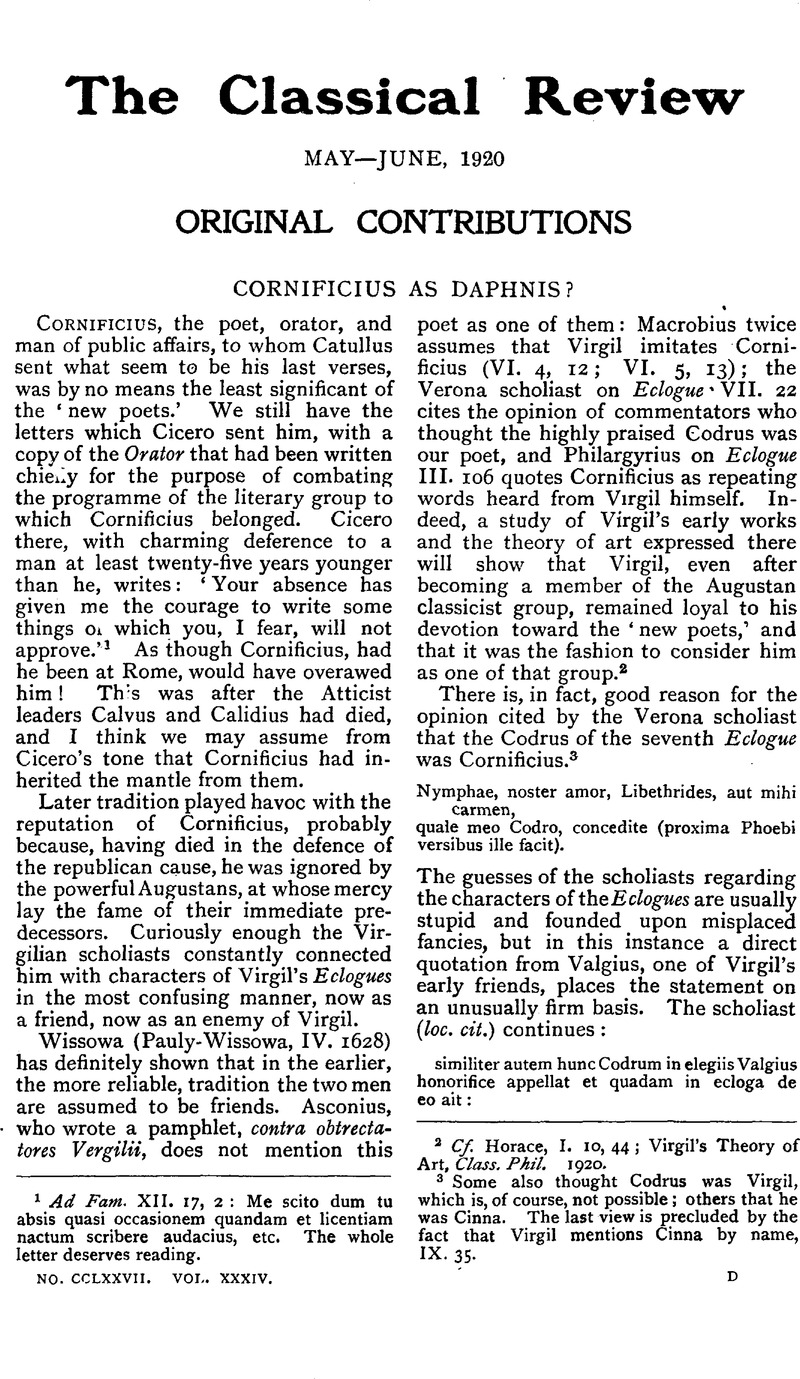No CrossRef data available.
Article contents
Abstract

- Type
- Original Contributions
- Information
- Copyright
- Copyright © The Classical Association 1920
References
page 49 note 1 Ad Fam. XII. 17, 2: Me scito dum absis quasi occasionem quandam et licentiam nactum scribere audacius, etc. The whole letter deserves reading.
page 49 note 2 Cf. Horace, I. 10, 44; Virgil's, Theory of Art, Class. Phil. 1920.Google Scholar
page 49 note 3 Some also thought Codrus was Virgil, which is, of course, not possible; others that he was Cinna. The last view is precluded by the fact that Virgil mentions Cinna by name, IX. 35.
page 50 note 1 Valerius Cato was then a crabbed old schoolmaster, Furius Bibaculus had lost the precarious standing he had once possessed, and Ticidas (Suet. Gram. 4) need hardly be considered. Cinna is generally identified with the poet who met his death at Caesar's funeral, though it must be confessed that references to him in Virgil and Valgius make this assumption doubtful.
page 50 note 2 St. Jerome, 2, p. 139 Sch.




